News flash: If you want the best TV, it’s gonna cost you. The LG G3 is the highest-performance television I have ever reviewed, and I’ve tested a lot of screens in my 20-plus years of reviewing. This TV balances the perfect contrast and black level of OLED with an image that’s brighter and more impactful-looking than other OLED TVs I’ve seen, including its chief rival, the Samsung S95C – which happens to be the second-best TV I’ve ever reviewed.
I compared the two side-by-side in CNET’s TV lab and both outperformed the other, less-expensive 2023 OLED TVs I had on hand – and in turn, OLED TVs have always looked better in my tests than non-OLED models, like mini-LED and QLED-based displays. The catch? The G3 is really expensive –and for most high-end TV shoppers something like the LG C3, which costs hundreds less, is plenty good.
If you happen to be that lucky TV shopper with extra money and a desire for world-beating images, however, the LG G3 is something special indeed. The secret is an entirely new display technology LG is calling “MLA,” which stands for micro-lens array. Billions of tiny lenses inside the OLED panel help focus the light, reduce scatter and improve efficiency. No other TV has this technology, and from what I’ve seen, it works very well to make OLED, the best TV screen technology, look even better.

LG G3 sizes, series comparison
I performed a hands-on evaluation of the 65-inch LG G3 OLED TV, but this review also applies to the other screen sizes in the series. The three smaller sizes have very similar specs and should provide very similar picture quality. The largest size, the 83-inch model, lacks LG’s MLA tech so it’s not as bright – LG claims it has the same brightness as last year’s G2.
- OLED83G3PUA, 83-inch
- OLED77G3PUA, 77-inch
- OLED65G3PUA, 65-inch
- OLED55G3PUA, 55-inch
The G3 series sits at the top of LG’s 2023 OLED TV lineup. Spending less for the C3 loses you the bump in brightness and the sleek “Gallery” wall-friendly design, but it has more screen size options, namely 42- and 48-inch options (which are, notably, dimmer than the 55-inch and larger C3s). The less-expensive B3 is in turn dimmer than the C3 and lacks the company’s latest-generation A9 processor. The most-expensive models from 2022, specifically the 97-inch G2 and the 8K resolution Z2 models, will remain on sale this year rather than being replaced by “3” equivalents (and speaking of expensive, LG is also selling its new wireless 97-inch OLED TV for $30,000).
Flat and flush for wall-mounting, stand optional
The G in G3 stands for “gallery,” which is LG’s way of saying the TV is designed foremost for wall-mounting. It includes a special bracket that lets it hang close to the wall with almost no gap, and combined with the cabinet’s thin depth, it looks basically flush when seen from the side.
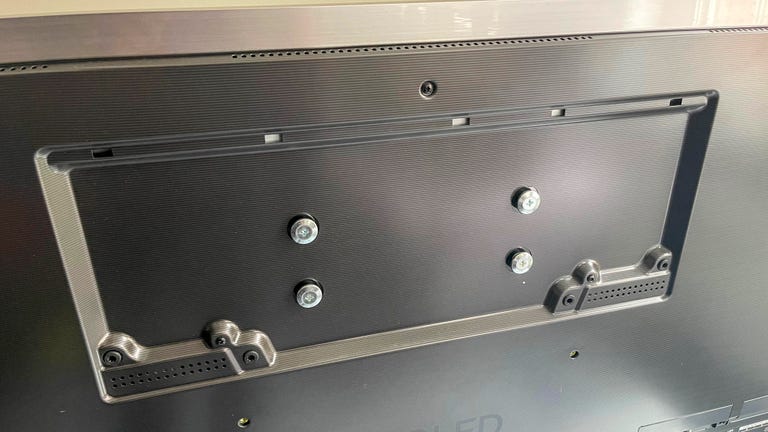
The downside is that, unlike pretty much every other TV, it doesn’t include a tabletop stand in the box. You can’t put this TV atop a credenza or other piece of furniture unless you purchase LG’s optional stand ($150 for the 65-inch size), which is pictured in these reviews. That’s kind of a bummer, but I’m guessing most people in the G3’s price, um… bracket, will choose to mount it on a wall.
LG kept the same remote, unfortunately. In my old age I’ve grown annoyed by too many highfalutin buttons, and I much prefer the streamlined, simple layout of Samsung and Roku/TCL remotes. As always, you can wave LG’s remote around to move the cursor, or scroll quickly through menus with the built-in wheel.
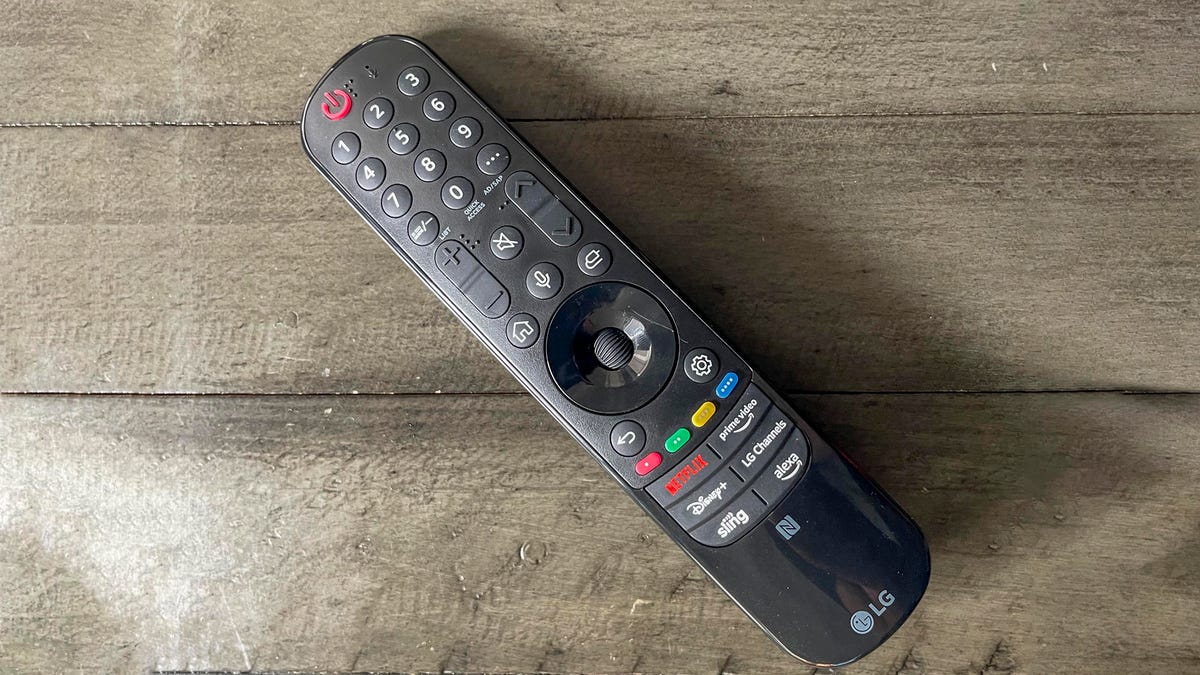
Smart TV? Get a Roku instead
LG’s redesigned menu system is less cluttered than last year’s but only because fully half of the screen is occupied by a big promotional space, which was showing an ad for LG’s free TV app when I saw it. Me no like. Below that is the marginally more useful row of “cards,” new for 2023, that offer things like the TV’s input, a game section, music and “home hub.”
The most useful card is the one for games, but it’s worse than Samsung, with a less-polished design and no access to Xbox Game Pass; instead LG only has Nvidia GeForce Now, Utomik and Blacknut cloud gaming (there’s a reason you’ve never heard of the latter two) in addition to Twitch, YouTube and a quick link for connected consoles. The sports card lets you set up alerts for favorite teams’ scores, which feels kinda useful to me, but overall the card row still feels like more wasted space. Only the bottom row, with actual streaming app icons, would get any use in my household.

In other words, I think most users of this high-end TV should just connect an external streaming device, like Roku or Apple TV, and avoid using LG’s system altogether.
The G3 also has a couple notable features LG debuted last year, namely a multiview that puts two images side-by-side – which remains limited and can’t show two HDMI sources – and the always-ready screen saver that can show clocks, art and other widgets when the TV is turned “off.” Elements of the latter move around the screen to reduce the possibility of burn-in.
Here’s where I remind you that, like all OLED TVs, the G3 is more subject to both temporary and permanent image retention, aka burn-in, than LCD TVs. The risk is small, which is why I don’t consider burn-in a reason for most people to avoid buying an OLED TV. Check out our guide to OLED burn-in for more.

Well-connected, especially for gamers
LG continues to excel at connection options. Like its competition the G3 has the latest version of the HDMI standard: 2.1. That means their HDMI ports can handle 4K at 120 frames per second and variable refresh rate, as well as enhanced audio return channel and automatic low-latency mode (auto game mode). In other words, they can take advantage of the latest graphics features available from PlayStation 5 and Xbox Series X and S consoles as well as high-end graphics cards. All four of the G3’s HDMI ports support 4K/120 –great for hard-core gamers with multiple next-gen devices.
- Four HDMI inputs with HDMI 2.1, HDCP 2.2
- Three USB ports
- Optical digital audio output
- RF (antenna) input
- RS-232 port (minijack, for service only)
- Ethernet (LAN) port
Picture quality comparisons: LG G3 vs. Samsung S95C
For my side-by-side image quality comparison I lined the LG G3 up against three other OLED TVs: the Samsung S95C, the LG C3 and the Sony A80L. The G3 looked the best of all of them, nosing out the Samsung and beating the other two a bit more handily – although all three looked excellent.
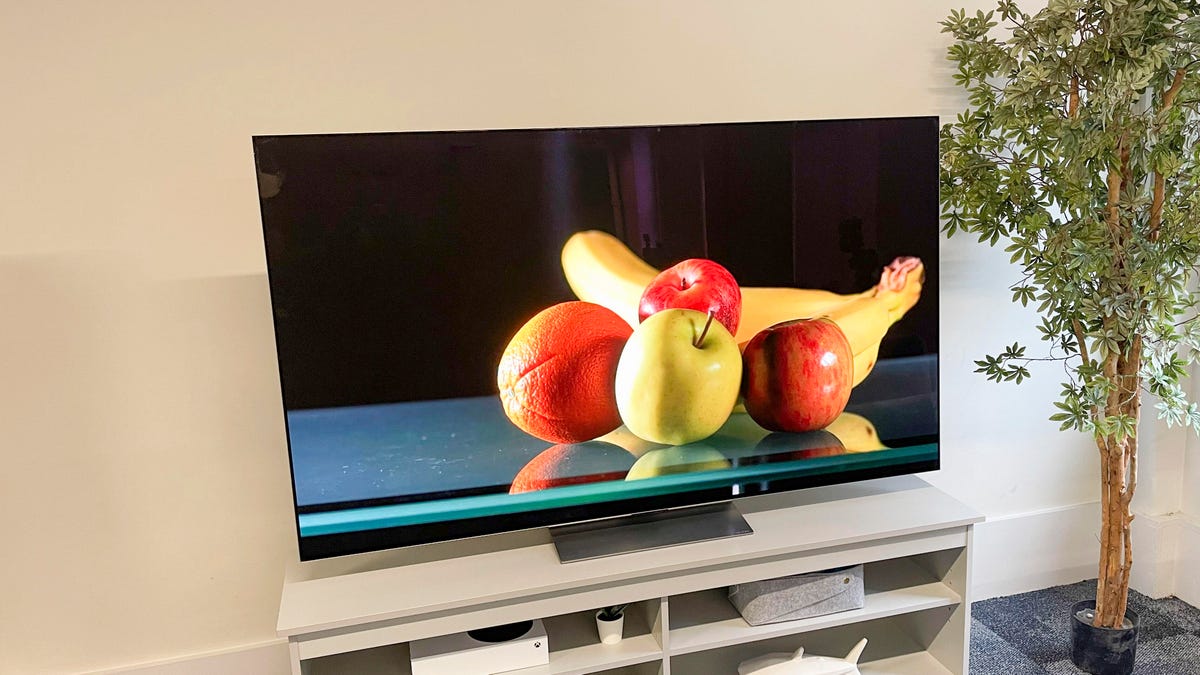
TV and movies: Not surprisingly the two most expensive TVs, the Samsung and the LG G3, also looked the best. I started my comparison as usual with the natural scenes of mountains, forests and flowers from the Spears and Munsil benchmark, and the extra brightness of those two OLEDs was evident, in particular during specular highlights like glints of sun and bright snow.
The G3 looked brighter than the Samsung to my eye in most scenes, however, an impression confirmed by spot measurements using a handheld light meter. The setting sun at 2:10, for example, measured around 680 nits on the G3 and 476 on the Samsung, for example. This extra brightness made the image stand out in the lineup and combined with the perfect black levels of OLED, delivered spectacular contrast and overall image quality.
The Samsung was incredibly dynamic and bright in its own right, however, and beat the LG in color saturation. Its reds in particular, for example in the fields of tulips, a pile of strawberries or the bulb of a cactus, looked richer than those of the G3 and the other OLED TVs. Not to say that the G3’s color looked undersaturated by any means, but next to the QD-OLED the difference was clear, and in very colorful scenes, especially ones with lots of red, I preferred the look of the Samsung.
In mixed bright and dark scenes, however, the extra brightness of the G3 and its handling of shadows outshone the Samsung. A scene of Seattle at night, for example, showed more detail in the dark trees and realism in the shadows that was missing from the S95C.
Watching more cinematic scenes, the differences between the G3 and S95C was more pronounced. Watching The Witcher Season 3 on Netflix, for example, the G3 looked brighter and more impactful in darker scenes, for example around a camp at night. Faces in the firelight looked more natural and distinct while still looking natural – a difficult balance. I also appreciated its improved shadow detail in the near-black areas like a cityscape around a castle or the recesses of the banquet hall. Although the Samsung’s red again looked a bit deeper, its color advantage wasn’t as noticeable as before.
Both sets looked excellent, but again I preferred the look of the G3 in most scenes. In terms of picture mode on the LG, I generally liked the look of Filmmaker mode better than Cinema for theatrical material, although I can see some viewer’s preferring the latter’s even-brighter cast.
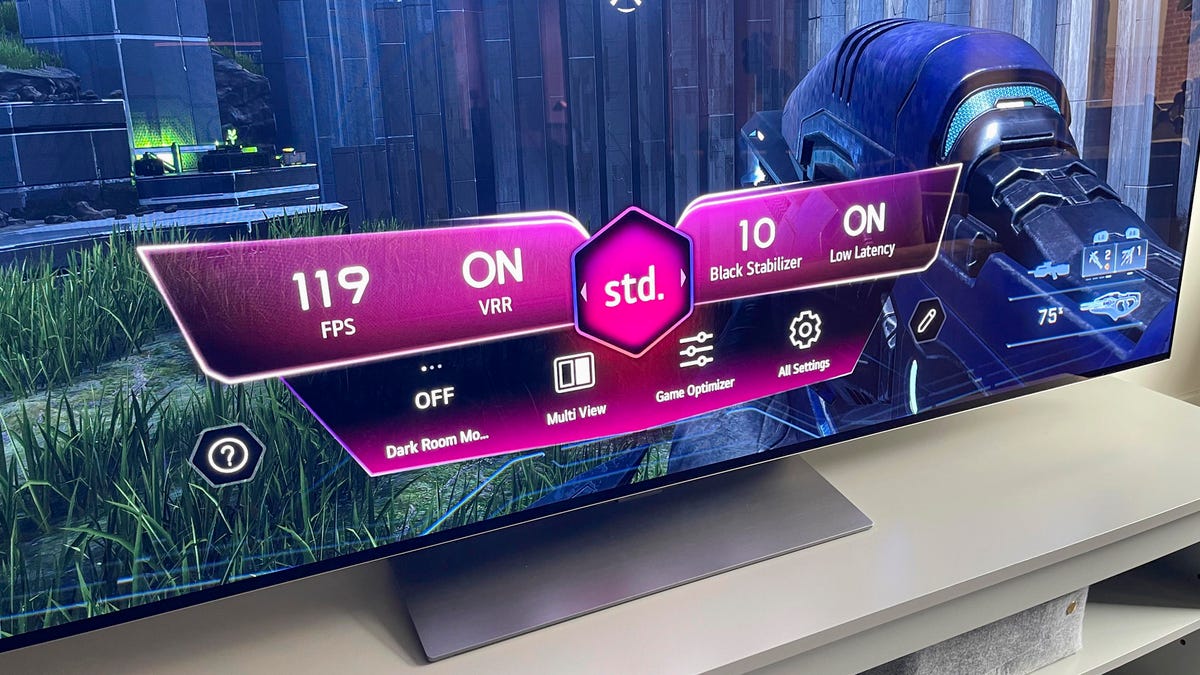
Gaming: The G3 remains a superb gaming TV, with more options in its Game Optimizer menu than other televisions, including the Samsung. It gathers all of the gaming settings in one place and verifies refresh rate, VRR status and more at a glance. I also appreciated the ability to edit the gaming dashboard to swap in more status indicators (resolution, Dolby Atmos and so on), but I’m pretty nerdy like that. Samsung’s Game bar has a cleaner design, however.
The Dark Room mode is designed to reduce eye fatigue, but it also dulls the image so I’d avoid using it unless you need to. Among the various gaming image modes I liked Standard best for most games with its balance of shadow detail and contrast. FPS is best if you want more visibility into shadows, or you can just crank the Black Stabilizer control up (at the expense of a washed-out image).
Comparing the image quality of Assassin’s Creed: Valhalla between the two TVs, the colors on the Samsung popped more than on the G3, although the grass and other “natural” objects looked more natural, and less neon on the LG. As with standard, non-gaming video the G3 also looked brighter, and its shadow detail advantage would be a boon in some dark games for seeing enemies.
Buried within Game Optimizer is another setting labeled “Reduce input delay (input lag)” with two options, Standard and Boost. The former, which is the default for any game, serves up an excellent input lag result: just 13.5ms for both 1080p and 4K HDR sources. Engaging Boost cuts lag even further, to just under 10ms for both, similar to the Samsung. The catch is that Boost is only available for 60Hz sources, so you can’t use it with 120Hz games or VRR. And no, I don’t think many humans would notice the extra 3ms of lag.
According to my Xbox’s details screen the G3 supported 4K/120Hz and VRR as well as Dolby Vision gaming (which Samsung does not support).
Bright lighting: With its combination of extreme brightness and improved anti-reflective screen, the G3 is easily the best OLED TV I’ve ever tested for bright rooms.
Below are my measurements in nits for select comparison TVs in their brightest and most accurate picture modes, using both standard dynamic range (SDR) and high dynamic range (HDR) test patterns.
Light output in nits
| TV | Brightest mode (HDR) | Accurate mode (HDR) | Brightest mode (SDR) | Accurate mode (SDR) |
|---|---|---|---|---|
| Hisense U8H | 1,867 | 1,867 | 1,605 | 1,605 |
| TCL 65R655 | 1,387 | 1,194 | 1,292 | 624 |
| LG OLED65G3 | 1,378 | 1,378 | 725 | 724 |
| Samsung QN65S95C | 1,348 | 1,326 | 238 | 648 |
| LG OLED65C3 | 861 | 817 | 501 | 464 |
| LG OLED65C2 | 812 | 759 | 413 | 389 |
The brightest mode for SDR (Vivid) is horribly inaccurate. For the accurate results listed above on the G3, I used ISF Expert Bright picture mode. Note that with SDR, you’ll need to disable the Auto Energy Saving setting (General > Energy Saving > Energy Saving Step > Off) and engage Peak Brightness (Picture > Advanced Settings > Brightness > (Peak Brightness: High) to get full brightness. HDR is a different and much simpler story. Cinema is the brightest mode and the most accurate, so you can set it and forget it regardless of room lighting.
The G3 maintained its peak brightness over time. I ran a test pattern for a full minute and it stayed the same brightness.
Like all OLED TVs, the G3’s brightness was significantly lower when a larger percentage of the screen was white. With windows larger than 10% of the screen its brightness fell steadily, hitting 454 nits with 50% of the screen white and reaching a low of 219 nits with a full 100% white screen. I’ve rarely noticed this drop-off when watching normal TV shows or movies, however, so I don’t consider it a big deal.
Seen side-by-side with the screen off or very dark material, it was obvious the G3 and C3 have different reflective characteristics. Bottom line: The G3 is better for bright rooms, and in fact has the best antireflective screen I’ve seen on any OLED TV. That’s because it dims reflections, for example a coffee table or couch captured by the screen, much better than the C3 or the Samsung S95C, so those objects are less distracting (a good thing). On the other hand the screen finish of the G3 was very slightly brighter than that of the C3 (a very dark shade of gray to the C3’s pure black), but the difference was minimal. The finish of the S95B, meanwhile, was markedly grayer under bright lights.
Uniformity and viewing angle: Like most OLEDs I’ve tested the G3 was exemplary in this area compared to LCD-based TVs, with no significant brightness or color variations across the screen and nearly perfect image quality from off-angle. It matched the other OLEDs in my lineup, too.
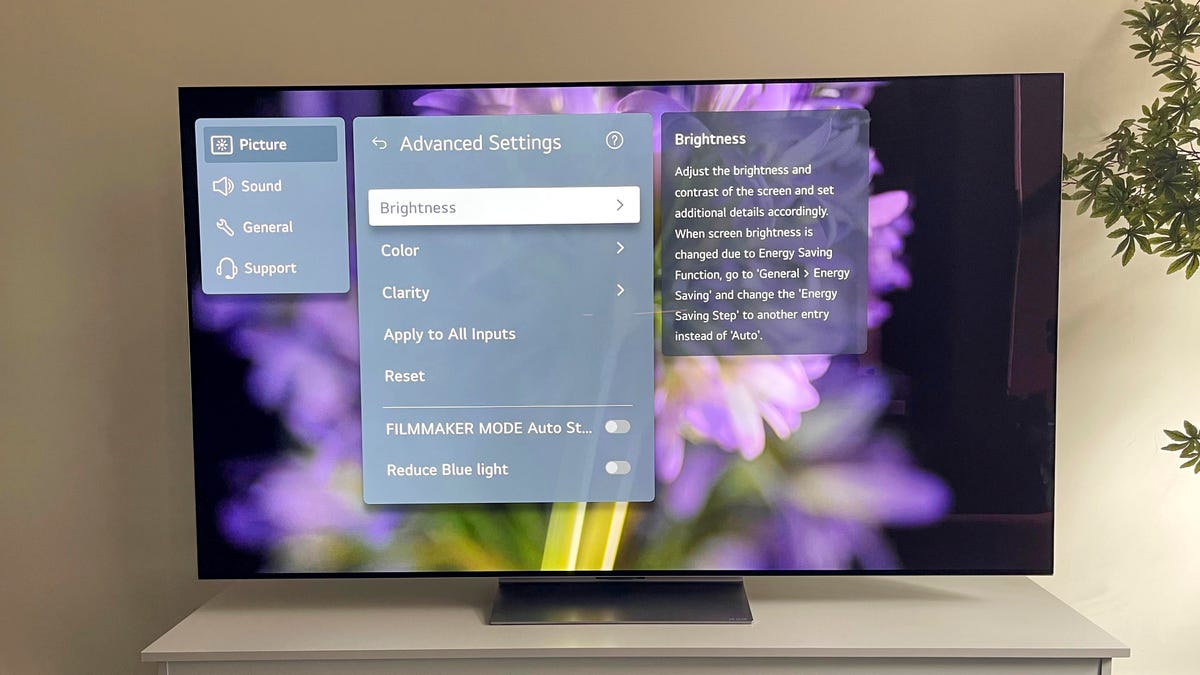
Picture setting notes
LG made some improvements to its picture settings menu. My favorite is the ability to edit the top level, letting me surface different settings for easy access and move around others. In addition to the standard litany of picture modes – Vivid, Cinema, Game Optimizer etc. – LG has a new “Personalized Picture” mode. Setting it up steps you through a series of images and asks you to choose which one you like best, and in the end an “AI” analyzes your choices and applies the mode. I gave it a whirl and the wizard said I liked a “Clear” picture, which it applied to the image. Unfortunately it didn’t look very good to my eye, and when I measured it the image was horribly inaccurate, so my advice is to stick with one of the (accurate) preset modes rather than the wizard.
According to my measurements Filmmaker was the most-accurate preset mode with HDR, but Cinema and Cinema Home were both exceedingly accurate too. I chose Cinema for brighter HDR viewing, in part because it delivered a significantly brighter image than Filmmaker, but the latter was more balanced for darker, cinematic content. For SDR I also went with Cinema because it was quite accurate and targeted my preferred 2.2 gamma (Filmmaker targeted 2.4). Both ISF modes were also quite accurate.
Game Optimizer is best for gaming, thanks to its processing, but quite blue; for the best color accuracy for gaming you should adjust the color temperature control toward red (Picture > Advanced Settings > Color > White Balance > Color temperature).
Like most TVs the G3 offers settings that engage smoothing, aka the soap opera effect, as I prefer to turn it off for TV shows and movies (and it’s off in Game Optimizer mode because it increases input lag). You can experiment with the settings (Picture > Advanced Settings > Clarity > TruMotion).
Geek box
| Test | Result | Score |
|---|---|---|
| Black luminance (0%) | 0.000 | Good |
| Peak white luminance (SDR) | 724 | Good |
| Avg. gamma (10-100%) | 2.17 | Good |
| Avg. grayscale error (10-100%) | 2.18 | Good |
| Dark gray error (30%) | 2.16 | Good |
| Bright gray error (80%) | 2.19 | Good |
| Avg. color checker error | 1.00 | Good |
| Avg. saturation sweeps error | 0.64 | Good |
| Avg. color error | 0.91 | Good |
| 1080p/24 Cadence (IAL) | Pass | Good |
| Input lag (Game mode) | 13.45 | Good |
| HDR10 | ||
| Black luminance (0%) | 0.000 | Good |
| Peak white luminance (10% win) | 1378 | Good |
| Gamut % UHDA/P3 (CIE 1976) | 98.26 | Good |
| ColorMatch HDR error | 2.25 | Good |
| Avg. color checker error | 1.18 | Good |
| Input lag (Game mode, 4K HDR) | 13.47 | Good |
See How We Test TVs for more details.
Portrait Displays Calman calibration software was used in this review.
